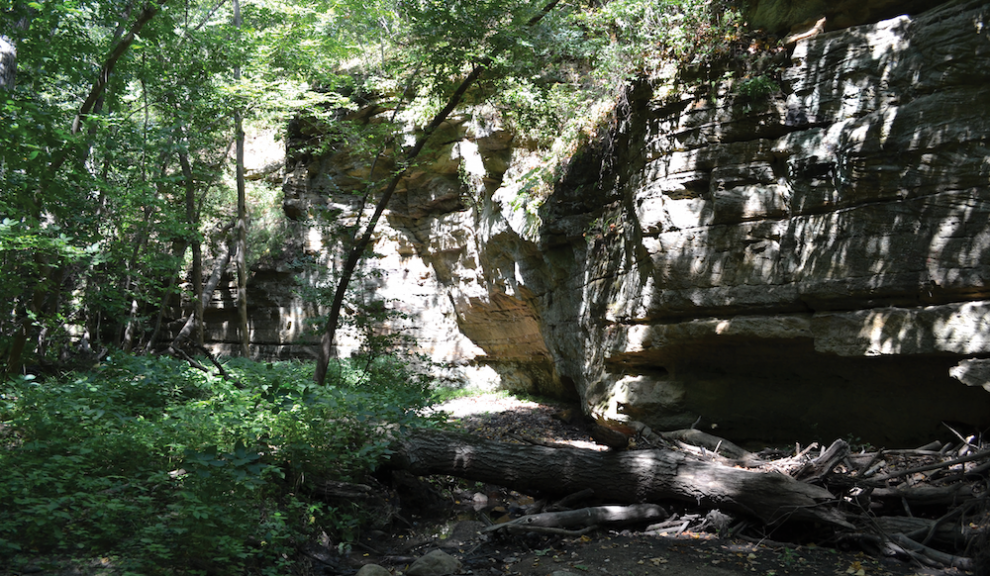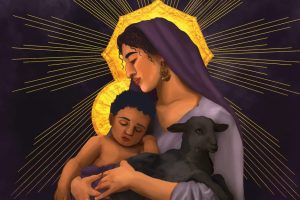Every Holy Week, we move through the paschal mystery with our bodies: We carry green palm branches, baskets of bread, bottles of wine, towels and basins; we walk shoulder to shoulder in procession; we smell the clouds of smoky incense and reverently feel the wooden cross beneath our hands.
We move through the paschal mystery with the heat and crackle of fire, the scent of beeswax, the slick wetness of chrism slathered on face and hands, the blast of trumpets, the sweet smell and bright sight of blooming lilies.
We walk with Jesus from the triumphal entrance into Jerusalem to the intimacy of the final meal. We walk with Jesus in the long night of agony and through each station of the cross. We walk with Jesus in the strange, empty silence between death and resurrection. We walk with Jesus in his encounter with Mary Magdalene in the garden. The triduum is the climax of the liturgical year, and we enact it in our bodies, as believers have done for centuries.
Of all the triduum rituals, Holy Thursday’s footwashing has long seemed to me the most tender and intimate. Each year parish ushers set up chairs, towels, basins, and pitchers of water in different parts of the sanctuary. And then we share in the beautiful, awkward choreography of washing one another’s feet. Many of us, like Peter, probably feel embarrassment or aversion or resistance to something so vulnerable. Something usually done only in the privacy of home—the untying of shoes, the unrolling of stockings, the peeling off of socks to reveal our bare feet—is shared collectively.
In footwashing, we say yes to the new commandment of love. Love given and received—not in philosophical notions or lofty ideas but in the baring of our feet, the pouring of water, the gentleness of touch, the tenderness of wiping with a soft towel. The annual ritual of footwashing has deepened in meaning for me each time Holy Thursday has come around on the wheel of the liturgical calendar.
Until this year.
Until the virus came and everything changed. Until suddenly love meant safe distance instead of caring touch. Until instead of gathering, we all stayed home for days, which turned into weeks, which turned into months. Until we all began a eucharistic fast that became eucharistic famine. Until full-bodied, sensual liturgy calling us to full, active, conscious participation went virtual, collapsed into two dimensions on a computer monitor.
Let me say it plainly: This is a grief. This is a loss. This is not what we want, not what we hoped for, not what we have known. While liturgists, musicians, preachers, presiders, and sacristans are to be heartily commended for their massive efforts in suddenly acquiring technical skills and shifting liturgy online in the pandemic and while we all try to make the most of it, the cessation of public worship brings deep sadness for many of us.
Without denying this grief, we can still ask: Where is God in this long stretch of not gathering for public worship as Catholics? What grace or growth might there be in this unchosen asceticism?
Certainly, for those of us used to the privilege of choosing between three or four different Mass times on a given weekend (and even more options if we travel a few miles to a neighboring parish) the ache draws us to solidarity. There are countless Catholics (and other Christians) around the world who cannot gather publicly to worship because of persecution, or they gather knowing they risk their safety in doing so. I remember the testimony of an Egyptian Catholic about the violence carried out at Christian churches on Christmas and Easter as I grieve not gathering at Mass on Sundays.
And, as the voices from the Synod for the Amazon reminded us, there are countless others in remote or inaccessible places who rarely if ever have access to the Eucharist and other sacraments.
We choose solidarity in joining our personal sorrow to this larger global grief of those who face eucharistic fast or famine as an ongoing and not just temporary reality. Our sadness does not go away, but it has a larger container and widens our heart toward greater compassion. Paradoxically, we are drawn into communion in not gathering to “receive communion.”
Beyond solidarity and a deepened empathy for and union with those who often do not have easy and regular access to the Mass, is there another grace or growth hidden amid the grief of “stay at home”?
I stumbled on the beginning of my answer to that question on Holy Thursday this year. While I had been faithfully watching livestreamed Mass—weekly and sometimes daily—since mid-March when public Masses were suspended, I just could not bring myself to “participate” in the Mass of the Lord’s Supper mediated by a computer screen.
With rich memories of past Holy Thursday celebrations—the tender carnality of footwashing, the institution of the Eucharist, the solemnity of processing behind the Blessed Sacrament, the collective singing of “Pange Lingua,” the hours of silent prayer before altars of repose late into the night—sitting at home watching the liturgy as grainy images on my laptop brought feelings of desolation.
On Holy Thursday evening I went for a hike in a nearby natural area, humming the “Tantum Ergo,” intending each footfall as a prayer. As I walked alongside the limestone bluffs passing oak and birch trees and feeling the cool early spring air on my skin, my appreciation for creation mingled with nostalgia for the familiar Holy Thursday rituals.
As I walked, the gravel crunching rhythmically beneath my feet, I suddenly remembered an excerpt from Jesuit Father Pierre Teilhard de Chardin’s “The Mass on the World.” On the front lines as a stretcher bearer during World War I and later on a paleontological dig in the Inner Mongolian desert, Teilhard was far from any chapel and without bread, wine, chalice, or paten needed to celebrate Mass.
Out of these experiences, Teilhard completed a 15-page mystical prayer-essay in five movements: offering, fire over the earth, fire in the earth, communion, and prayer. “The Mass on the World” reflects his deep devotion to Christ, his passionate awe at the holiness of the entire universe, and the sense of Christian worship as cosmic.
“Since once again, Lord . . . I have neither bread, nor wine, nor altar, I will raise myself beyond these symbols, up to the pure majesty of the real itself; I, your priest, will make the whole earth my altar and on it will offer you all the labours and sufferings of the world,” Teilhard writes in the first section, titled “The Offering.” In increasingly ecstatic and intimate language of prayer, he writes near the close of the Mass: “For me, my God, all joy and all achievement, the very purpose of my being and all my love of life, all depend on this one basic vision of the union between yourself and the universe.”
In remote, rugged landscapes, unable to celebrate the Eucharist, Teilhard was drawn to worship God present in all creation. That Holy Thursday evening, as I watched the sunset on the Mississippi River and a blue heron arc across the sky, I breathed a prayer of gratitude for the glimmer of awareness of “the whole earth” as altar. And I realized my grief at losing treasured practices could coexist with the grace of knowing communion is far grander and more expansive than what happens within the walls of a church building.
This article also appears in the July issue of U.S. Catholic (Vol. 85, No. 7, pages 25-26). Click here to subscribe to the magazine.
Image: Flickr.com/Zach Diehn














Add comment